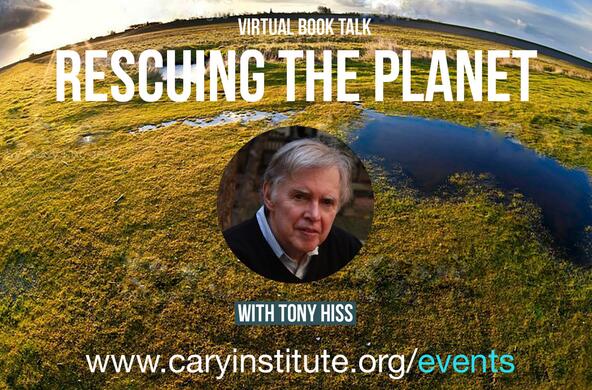Ecologists spend a lot of time talking about productivity and diversity. These terms are used somewhat differently than in daily conversation, so it’s worth discussing the differences here.
For ecologists, productivity means plant growth in a given area—land or sea. Plants in productive areas conduct a lot of photosynthesis, converting sunlight energy into new plant tissues. Foresters like productive lands; it means more trees. Ranchers refer to productive pastures, but they are not talking about their animals. They relish plant productivity, because it provides greater forage for animals. Fishermen sometimes talk about productive fisheries, but a productive fishery is also based on a lot of plant growth—phytoplankton in the water.
Unlike in economics, ecological productivity does not imply high efficiency (output per worker). In nature, some of the highest productivity is found in ecosystems that are relatively inefficient in converting sunlight energy to plant biomass—for example tropical rainforests.
In modern vocabulary, diversity generally refers to the number of ethnic groups represented in a neighborhood, a school system, or a political party. We are all of the same species, so this is a rather narrow definition of diversity. To an ecologist, diversity is the number of different species in an area, also known as biodiversity or richness. Unlike some politicians, ecologists are also concerned with how equitably the resources are shared among the various species that are present.
One of the longstanding questions in ecology is whether productivity bears any relationship to diversity. After all, if it does, then the ongoing loss of species from our planet might be expected to lower its productivity, which would be bad for species like Homo sapiens that depend on nature for food, fuel, and shelter.
Field observations have not resolved the relationship between productivity and diversity. Tropical rainforests and salt marshes have some of the highest rates of plant growth—primary productivity—on Earth, but the rainforest has lots of species and often the salt marsh has only one. Some of the most productive agricultural lands are intentionally maintained as monocultures of one species, albeit at considerable economic costs for cultivation, irrigation, fertilizer, and pesticides.
Lower productivity is often blamed on human impacts, such as acid rain, but the best comparison is between what is measured in the field versus the plant growth that might be expected in a region given the climatic characteristics (temperature and precipitation). Agricultural lands are often less productive than the natural landscapes they replaced, when the artificial inputs are removed.
In recent years, ecologists have conducted a number of field experiments in which they have altered the number of species present and measured the resulting plant growth. These studies overwhelmingly show that species diversity affects the overall growth of plants, above and beyond the climatic and soil characteristics that also determine productivity. Species diversity results in higher efficiency of resource capture among plants, especially sunlight, but also lowers nutrient losses from the soil and allows communities of plants to respond to varying annual conditions of drought.
So the jury is now in; conserving diversity ensures a more productive and stable set of ecosystems on which humans depend.
References
Duffy ,J.E., C.M. Godwin, and B.J. Cardinale. 2017. Biodiversity effects in the wild are common and as strong as key drivers of productivity. Nature 549: 261-264.
Iverson, R.L. 1990. Control of marine fish production. Limnology and Oceanography 35: 1593-1604.
Oesterheld, M., O.E. Sala, and S.J. McNaughton. 1992. Effect of animal husbandry on herbivore-carrying capacity at a regional scale. Nature 356: 234-236.
Smith, W.K., C.C. Cleveland, S.C. Reed, and S.W. Running. 2014. Agricultural conversion without external water and nutrient inputs reduces terrestrial vegetation productivity. Geophysical Research Letters 41: 449-455.
Tilman, D., D. Wedin, and J. Knops. 1996. Productivity and sustainability influenced by biodiversity in grassland ecosystems. Nature 379: 718-720.






